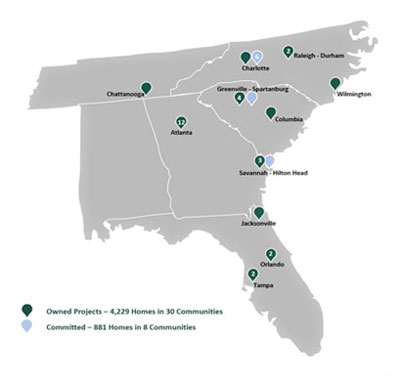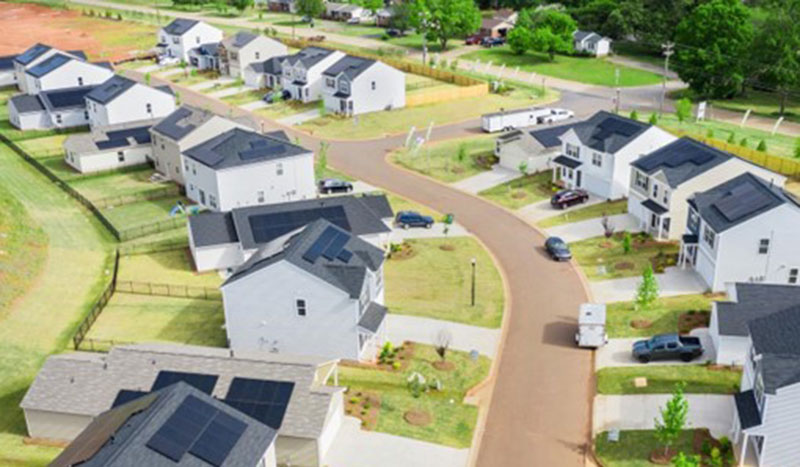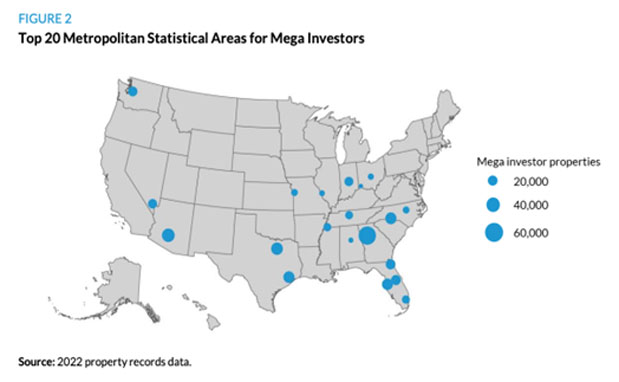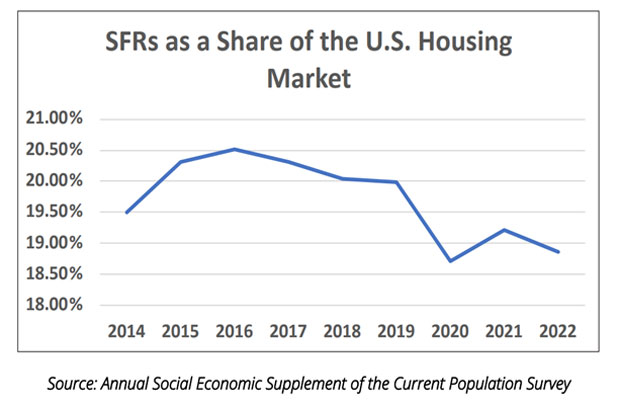The single-family rental phenomenon began after the 2008 financial crisis. With houses going into foreclosure, institutional investors realized they could purchase homes at baseline prices and rent them out at premiums.
While rental housing itself was not new, its popularity continued to grow following the global financial crisis. In 2020, the single-family rental market hit another peak during the COVID-19 pandemic, when preferences changed. People didn’t want to be living with shared walls and corridors and realized they didn’t have to live in the same city in which they worked.
The shakeups in the economy and consumer preferences ultimately led to a housing shortage in the United States. According toCNN, the country is short roughly 6.5 million units of housing, meaning there aren’t enough homes to keep up with the number of new households that are forming.
Thus, the build-to-rent industry materialized, with contiguous neighborhoods being built with houses solely for rent. Large institutional investors entered the build-to-rent (BTR) industry, along with smaller firms whose sole goal was building purpose-built housing for rent.

Quinn Residences is located throughout six states in the Southeast.
My company, Quinn Residences, is a BTR owner/operator and developer based in Atlanta with more than 5,110 homes across 38 communities in our portfolio. Our focus is on the Southeast, as the region received massive in-migration before and after the pandemic from those looking for more space, better weather, and greater job opportunities.
Since its inception, BTR has been misconstrued or confused with institutional investors purchasing homes out of the hands of hard-working Americans. In reality, the industry is adding purpose-built homes to the housing supply and providing another option for those who don’t want to or can’t afford to buy. Build-to-rent is in fact, helping the housing crisis by offering a more attainable option with reasonably priced rents.
Attainable Housing
A portion of residents at Quinn are “renters-by-choice”—meaning those who choose to rent, though they could afford to purchase a home. Retirees who are downsizing, choosing to live closer to their family, or simply don’t want the hassle of owning a home make up a bulk of this segment of residents. With these renters-by-choice choosing to downsize and rent, more for-sale housing stock is released back into the market. As people move up, this could also allow for more starter housing to become available for those who do wish to purchase homes.

Quinn’s Durham community in Spartanburg, South Carolina, features contiguous solar-powered homes all for rent.
奎因的居民是那些的另一个部分would like to buy a home but can’t afford it at this time. Mortgage rates are hitting 7 percent and younger generations are struggling to save for a down payment in this unsteady economy. Built-to-rent offers the luxury of being in a home without the financial burden. Lawns are maintained, full-service teams handle maintenance requests, and there is no long-term commitment. In fact,John BurnsReal Estate Research and Consultingreported that owning a home is $839 more per month than renting. Build-to-rent is providing an attainable housing option with more flexibility for those who need it.
Why the Build-to-Rent Model Attracts Investors
Land and materials are expensive and can’t be acquired without proper financing. Luckily, the BTR industry has caught the eye of large institutions due to its stable cash flow. Particularly, the Southeast has seen the most investor activity due to fast-growing metropolitan statistical areas.Bloombergreported that 2.2 million people moved to the Southeast in just over two years.
Population increases in an environment with a limited housing supply is a prime factor for BTR development. While investors typically prefer to turn around their investments quickly, many in the BTR game are in it for the long haul. They see the potential this industry has as renters’ preferences are changing and trending toward a different way of living.

According to Urban Institute, institutional SFR investors are concentrated primarily in the Southeast. (Urban Institute)
For Quinn, we initially set out to raise $250 million in equity. We quickly blew that number out of the water and raised just under $1 billion from Conversant Capital, and other strategic partners. In April, we closed a $500 million revolving credit facility led by JPMorgan Chase Bank with an accordion feature that permits Quinn to increase the borrowing capacity up to $1.5 billion. This financing, even against market volatility and economic uncertainty, proves that capital is out there for those operators with a proven track record.
Lenders and investors are putting their faith and money into BTR because of its longevity. The way people have viewed housing has changed. The American Dream has shifted as people realize owning a home isn’t the only way to build wealth. Exasperated by the pandemic, this point of view will continue to change as lifestyles and preferences transition toward a more renter-friendly lifestyle.
Build-To-Rent Challenges
The adoption of BTR has not been accepted by all. Fitting in the in-between of multifamily and traditional single-family, people don’t know how to categorize it. The sector is often misunderstood, receiving criticism on both the local level and on a national scale.
Locally, the single biggest threat affecting BTR is NIMBYism. Naysayers are trying to stop communities everywhere out of fear of the unknown. Many NIMBYs associate rental housing with unpleasant neighbors, overcrowded schools, increased traffic, and fears most commonly known with apartments. When in fact, Quinn’s residents, on average, make five times more than rent and are vetted more stringently than most first-time homebuyers.
Built-to-rent companies that are institutionally backed will also not let their homes fall into disrepair. They will make sure the lawns are taken care of, taxes are paid for, and the houses are maintained. A BTR home takes up the same amount of space as a single-family home, meaning density is unaffected. Traffic and schools won’t be any more congested if a BTR community was built instead of a traditional for-sale neighborhood.
Nationally, there is a reputation that Wall Street is buying up homes from hard-working Americans and putting them up for rent at high prices. In fact, according toThe Atlantic, institutions own less than 2 percent of the roughly 23 million single-family rental homes in the U.S. Plus, BTR is adding to the housing stock by providing more inventory to the struggling housing market.
According toBankrate’shomeowner data, homeownership rates have remained steady since 2020, meaning that institutional owners have not prohibited anyone from owning a home. Bankrate also cites the main reason people may not be able to buy is high mortgage rates. Dismantling the stigma surrounding institutional ownership of BTR homes is paramount to understanding the rental housing industry.

An analysis of housing data from the Annual Social Economic Supplement of the Current Population Survey, published by the U.S. Census Bureau, reveals even though demand for single-family rental homes increased during the decade 2011 – 2021, the share of single-family rental homes within both the single-family and rental housing markets declined.
To combat negativity around BTR, education is key. There is a housing shortage, and local municipalities can help by streamlining processes for developers rather than fighting it. Policymakers at all levels should work collaboratively to spur new development and housing investment.
Built-to-rent is paving the way for another way of living. The American Dream of owning a home is still there for some but isn’t the path everyone wishes to take. The only way to end the massive housing shortage is to provide more options. Single-family homes built solely for rent are offering another attainable option of housing. Whether it’s a young couple or family who can’t yet afford to buy a home, retirees looking to move closer to their grandchildren, or someone who wants a temporary living option, BTR provides quality, reasonably priced homes in a community setting.

